Menu
Rivers and Water Resources Reports
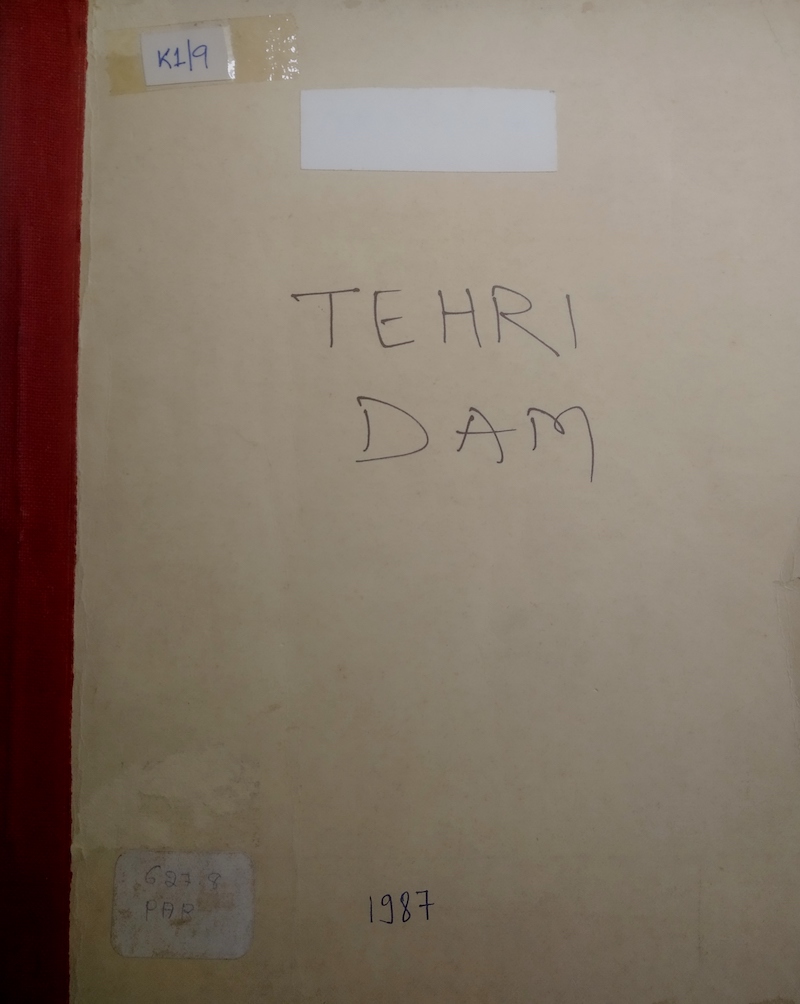
Evaluluating Tehri Dam
1987
INTACH had been opposing the controversial dam even at its conceptual stages. Based on available data non-govt experts produced this cogent rebuttal of govt. arguments based on a realistic cost-benefit analysis, the enormous threat to downstream towns in the event of a dam burst, and the overall vulnerability of building the collosal dam in a fragile ecology and a young geology.
Ecological Inventory of Yamuna River in NCT Delhi
2015
Development has taken a heavy toll of the Yamuna River and particularly in NCT Delhi which contributes 70% of the pollution load in the river. Moreover diversion of river waters at the upstream Hathnikund Barrage has left the river flow anaemic. The combination of these two factors has severely impacted the aquatic fauna and riparian flora. The inventory was carried with reference to archival material on the earlier conditions and field observations and community interaction has brought out the adverse position availing now.
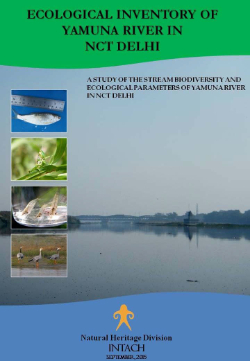
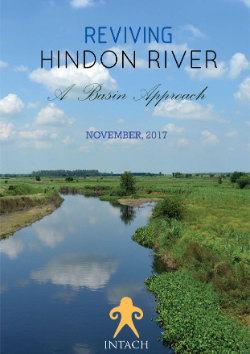
Reviving Hindon River – A Basin Approach
2017
Hindon is a medium river flowing entirely within UP State. A water budget approach based on available secondary data has done much to change the focus of conservation efforts from pollution to obtaining adequate flow. This pioneer study has been influential in river thinking and includes comprehensive basin approach to river conservation. The exercise flagged the paucity of data insofar as medium and minor rivers are concerned. The use of rivers as water transfer canals, upsetting the entire eco-system, has created a situation where they are neither fish nor fowl i.e neither wholly a river nor wholly a canal.
Water Policy for Urban Areas
2017
This booklet prescribes a template for Indian urbanisms to adopt in order to manage the dwindling water resources. Its key thrusts are on demand management and wate water recycling.
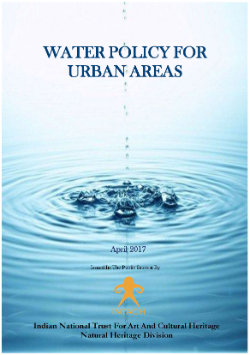
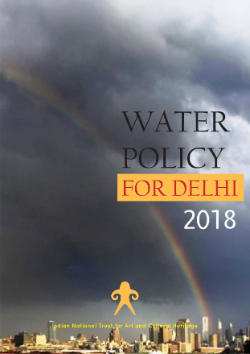
Water Policy for Delhi
2018
Water is the critical determinant of the sustainability of urban regions. Ballooning demand, variability of river flows, climate change [warming and rainfall variability] , depleting ground water reserves, conflicts with upper riparian users, inadvisability of creating a further storage reservoirs in the high Himalayas have brought the spotlight on Delhi’s future water security. The document sets the context for Delhi’s water policy, examining its resource dynamics, trends in population and demand, stakeholder analysis , the legal framework , learnings from water policies in other provinces and internationally, scenarioplanning before arriving at a set of 12 major policy statements. The most vital component is an emphasis on demand management as against the earlier focus on supply side management
Understanding Rivers
2018
Rivers across India, the lifelines of the country, are in dire state mainly as a result of exploitative and perverse human interventions which pose a clear and present danger to a very existence of rivers. An understanding of rivers as system is a fundamental requirement for undertaking conservation planning for any order of the stream hierarchy. This book demystifies the various expert terminolgies for the activists from civil society organizations to enable them to converse with river experts from the establishment on equal terms.
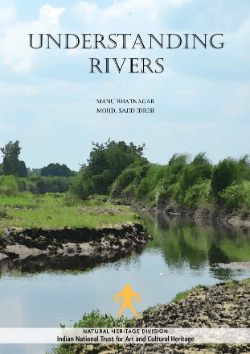

Guide to Preparing River Basin Management Plans for Medium and Minor Rivers
2020
This Guidebook has been prepared with the idea of propagating an uncluttered methodology for robust basin planning at the level of medium and minor rivers. The methodology aims at creating a broad basin water budget adequate for prudent interventions. This Guidebook can enable several organizations to take up the cause of river restoration in their respective areas in an effective manner.
Closed Water Resource Cycle: Demonstrator for Recycling STP Water, Delhi
2020
Like many cities NCT Delhi faces an uncertain water future. Rainfall has become varible, river water are contested by upper riparians, water tables have plumetted while demand is set to rise. The necessity of recycling treated wastewater can no longer be avoided or postponed. Wastewater is a resource which cannot be limitlessly thrown back into natural receptacles and allowed to overwhelm natural systems. However, even if the treated wastewater meets drinking water standards citizens are averse to use it. On the other hand, in the case of Hauz Khas, it is noted that aquifer water, which is receiving soil filtered treated wastewater, and is of near drinking water class, is readily picked up by surrounding colonies as it is now groundwater for them. Based on this understanding INTACH has conceived using the Narela STP effluent to fill 6 lakes in Narela and Tikri Khurd in order to recharge the depleted aquifers in that area and make use of recycled water.
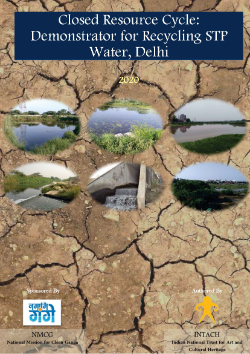
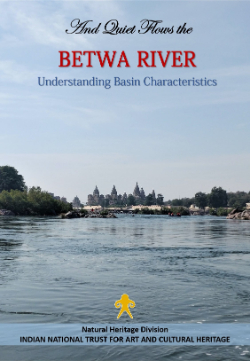
Quiet Flows the BETWA RIVER
2021
The Betwa river is known as the Ganga of Madhya Pradesh. Despite being a prominent river it has been greatly understudied. As it is part of the controversial Ken-Betwa link it was felt that more needs to be known about the Betwa and this study, based on field work and secondary data, is an attempt to close the gap. The study adopts a basin approach and concludes that the Betwa basin, if it uses itts water prudently, does not need water fronm the Ken river.
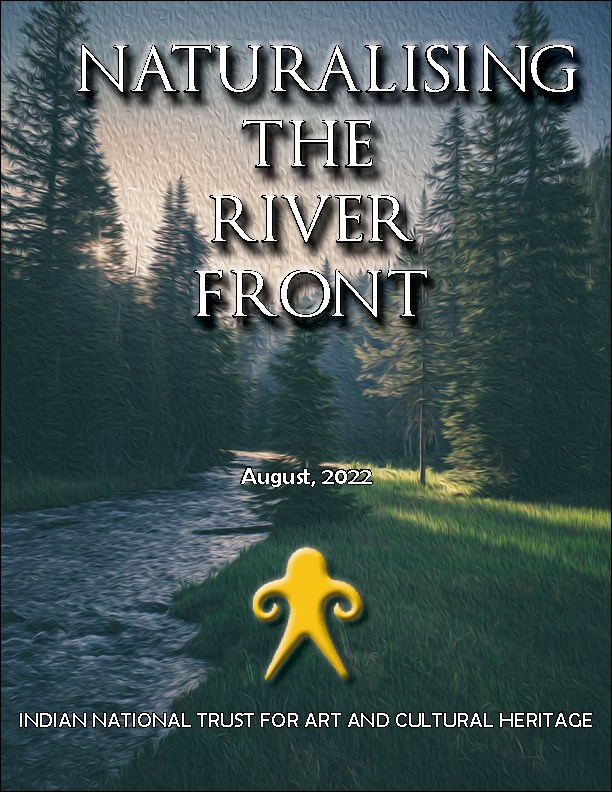
Naturalising The River Front
2022
River front development is the new buzz word in the lexicon of urban local bodies. Taking up a river front sends a signal of smartness, dynamism and happening. Most river fronts, however, are celebrations of concrete with hard surfaces killing the ecological processes, habitats and niches. But is there a way to create softer, natural river fronts where natural processes thrive, the river eco-system remains integrated, and a sense of serenity soothes and elevates the spirits of the visitor?
This monograph provides pointers to the several ways whereby concrete pavements recede and enable natural elements to come to the fore in river front development.
Ganga Katha : Samagrata
2022
Ganga, since time immemorial, has been the cradle of Indian civilization, associated with all rituals from birth to death, and an enduring destination for pilgrimage. She has inspired the lifestyle, culture, architecture and environ of natives and travelers alike. Ganga Katha : Samagrata, the first volume of Ganga Cultural Documentation is an exploratory journey into the multi-faceted nature of Ganga, her myths and legends, her sacred aura, her cosmology, iconography and the lands she quenches and the lives she touches.
Ganga Katha : Samakshata
2022
Emerging from the glacial cave of Gaumukh, Ganga traverses the Indian mainland to join the Bay of Bengal at Gangasagar. In her journey of 2525 km, Ganga, through the passage of time, is not only a flowing water but also a cultural stream inspiring architectural and cultural heritage along her banks. INTACH, sponsored by Namami Gange, undertook the mammoth task of documenting the natural, built and cultural heritage, in a 5 km corridor along both banks of Ganga through the 51 districts of 5 states she flows through, to bring forth a 600 page volume that conveys the distilled essence of 153 reports of these districts. The accumulated observations and documentation provide pointers to the several initiatives which can be undertaken for cultural, natural and economic revival along Ganga.
